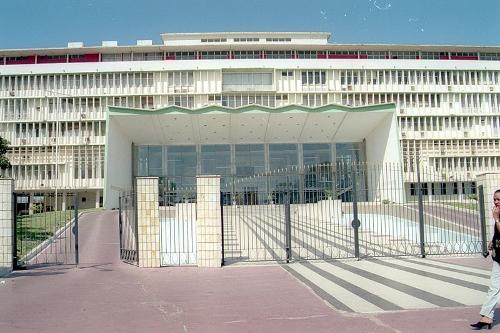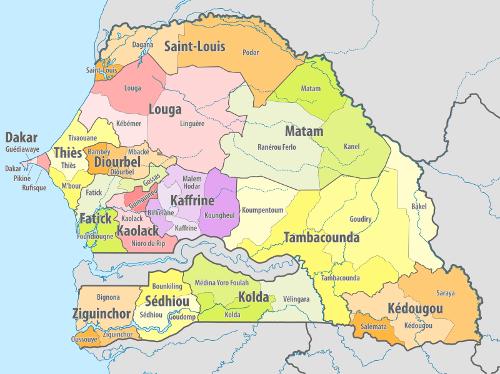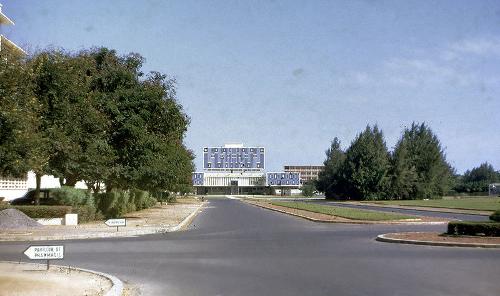SENEGAL
Society

Society
Society
State structure
 Parliament building in Dakar, SenegalPhoto: Bernard bill5 CC 3.0 Unported no changes made
Parliament building in Dakar, SenegalPhoto: Bernard bill5 CC 3.0 Unported no changes made
The Senegalese state institution is very similar to the French one. The president, elected for seven years (now Five) by universal suffrage, is very powerful. He can appoint and dismiss the prime minister and the ministers. He is mainly concerned with foreign affairs and defense.
The Parliament, the Assemblée Nationale, is elected for a period of five years and has 120 members.
 Administrative division of SenegalPhoto: Amitchell125 CC 4.0 International no changes made
Administrative division of SenegalPhoto: Amitchell125 CC 4.0 International no changes made
Senegal is divided into ten "regions", each with its own parliament since 1996, which is subdivided into 30 departments. These departments are subdivided into 89 arrondissements. A region is headed by a governor who is accountable to the Home Secretary. The departments are administered by a prefect, the districts by a sub-prefect.
Senegal is still an active member of the French Commonwealth of Nations, the Francophonie. For the current political situation see chapter history.
Education
 Campus of the University of Dakar, SenegalPhoto: Phillip Capper CC 2.0 Generic no changes made
Campus of the University of Dakar, SenegalPhoto: Phillip Capper CC 2.0 Generic no changes made
Education in Senegal is still in its infancy. About 60% of children only attend primary school for a few years. There is a shortage of everything: too little money and therefore too few teachers, too few schools and too few teaching materials. Moreover, the French school system is adhered to, which does not match the perception and language background of most children. Girls in particular, who are quickly burdened with the household, are the victims of this problem.
Schools have started teaching Wolof or other tribal languages on a small scale. Literacy courses in their own language are also given to adults in rural areas. Yet about 63% of the population is still illiterate.
In the Quranic schools, emphasis is placed on Arabic, which is not very useful for gaining a good position in society.
Secondary education is mainly found in Dakar and in some large cities. There is hardly any technical and domestic further education. Construction, industry, and household skills must be learned on the job. There are two universities, in Dakar and St. Louis. The University of Dakar in particular suffers from a chronic shortage of money. Students with wealthy parents attend classes in France or the United States.
Sources
Derksen, G. / Gambia, Senegal
Gottmer
Dirkx, J. / Reishandboek Senegal
Elmar
Else, D. / The Gambia and Senegal
Lonely Planet
Gambia en Senegal
Cambium
Hesseling, G. / Senegal/Gambia : mensen, politiek, economie, cultuur
Koninklijk Instituut voor de Tropen
CIA - World Factbook
BBC - Country Profiles
Copyright: Team The World of Info